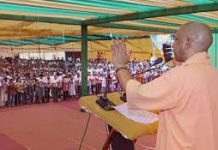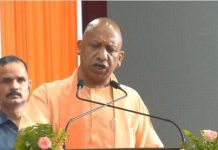
At the end of the day, a smart city has to allow the policymakers to “engage more effectively and actively with its citizens”, as defined by a few experts. It needs to be interactive, and allow participation by the local communities. Another definition states that a smart city has to create “sustainable economic development and high quality of life” through “human capital, social capital, and/or ICT infrastructure.” Thus, it is not merely the smart solutions or use of it that’s critical; individuals and local societies have to be involved in the process.
In Surrey (Canada), which is included in the ICF’s list, the city formed the Mayor’s Health Technology Working Group, which comprised 50 representatives from universities, the health authority, non-profit organisations, business associations, the government and developers, to evolve a vision. The Group’s goal is to boost local employment by 50 percent. In Arlington, a “formal structure of more than 40 citizen advisory groups and commissions… influences decisions on everything from land-use to technology” and seeks ways to “reinvent the way citizens engage with the government.”
RACE TO BE SMART
Naidu’s biggest mistake lies in his rush to brush up the 98 cities. Initially, the consultants have 100 days to formulate the Smart City Plans (SCPs). Experts feel that the time is too limited. “We have evolved several plans on public health for various cities,” says one of them, “and such exercises take a year or more. Even when the state governments and local bodies help with the information and past projects, we have found that the reality on the ground is different. Official information is invariably out of date, and projects’ achievements are exaggerated. Most important, the citizens’ ideas are different, even contradictory, with those of the policymakers.”
What may happen with the SCPs is that the consultants will merely ‘beg, borrow and steal’ from the existing plans of the various cities. It may end up as a ‘cut-and-paste’ job without any understanding of the local needs and city-specific realities. Thanks to this lack of information, the consultants will focus on the creation of infrastructure, which is more visible, without any consideration to how it will be used by the local population. A prime example is Delhi’s Bus Rapid Transit System, popularly known as the BRT, which was initially criticised and then scrapped.
The SCPs may be half-baked because the winning bidders will be those who quote the least. They are unlikely to spend too much on research. There is a fear that consultants may be in cahoots with the municipal bodies.
The former may prepare the SCP for a ridiculous amount, say Rs 500,000, to grab the projects, and offer cuts to the latter at the implementation stage. Experts contend that this has happened in a few cases. “No consultant can prepare a smart city plan for a few lakhs of rupees. It implies that it would conduct only online research,” says one of them.
SEE THE MONEY As per the government’s figures, the Centre will spend Rs 48,000 crore over five years to smarten 98 cities. This translates into an average of Rs 100 crore per city per year. An equal amount will come from the respective states or municipal bodies. Thus, nearly Rs 100,000 crore will be available over the five-year period. Is a sum of Rs 200 crore per year or Rs 1,000 crore over five years enough to create a smart city? Obviously no! To cite an example, Delhi spent an astounding Rs 66,550 crore on its facelift prior to the Commonwealth Games. Of this, Rs 5,700 crore went to build new flyovers and pedestrian bridges. The expansion of the Delhi Metro required Rs 16,887 crore, and an additional Rs 35,000 crore was spent on new power plants to provide assured electricity.

Even if one accepts that these are exaggerated figures and a lot of money was siphoned off during the Games, NDA-2’s vision of a smart city will require tens of thousands of crores of rupees over a longterm period.
Even the Centre recognised this fact. In its document on the financing of smart cities, it said, “It is anticipated that substantial funds will be required”. The grants from the Centre and states “will meet only a part of the project cost” and, hence, these grants need to be “leveraged to attract funding from internal and external sources.” The internal sources may include higher user fees and beneficiary charges and the external ones can include municipal bonds, borrowings from financial institutions and public-private partnerships (PPPs).
However, all these are fraught with problems. Most municipal bodies are financially unviable; of the three in Delhi — East Municipal Corporation, North Municipal Corporation and New Delhi Municipal Corporation — only one makes money. While the East and North incurred an annual loss of Rs 500 crore and Rs 1,000 crore, respectively, New Delhi earned a small profit of Rs 335 crore in 2013-14.
If the local bodies hike user charges, it will anger the consumers, which puts the entire concept of citizen-friendly smart cities in jeopardy.
Given such financial woes, the municipalities cannot raise money through bonds and external borrowings. In the recent past, PPPS in the infrastructure sectors have proved to be unviable and inefficient. Thus, the only option before most of the local bodies is to raise additional amounts through grants from bilateral and multilateral institutions.
While the idea to create smart cities is an excellent one, the government may end up making them more stupid and citizen- unfriendly. Instead of plunging into the concept, it may be better to think it through, and evolve a plan that’s useful. More importantly, smart cities are not created in a physical manner but in the minds of the people. Most importantly, Rome was not built in a day or five years. Globally, most smart cities have a 20-30 years horizon.
editor@tehelka.com













